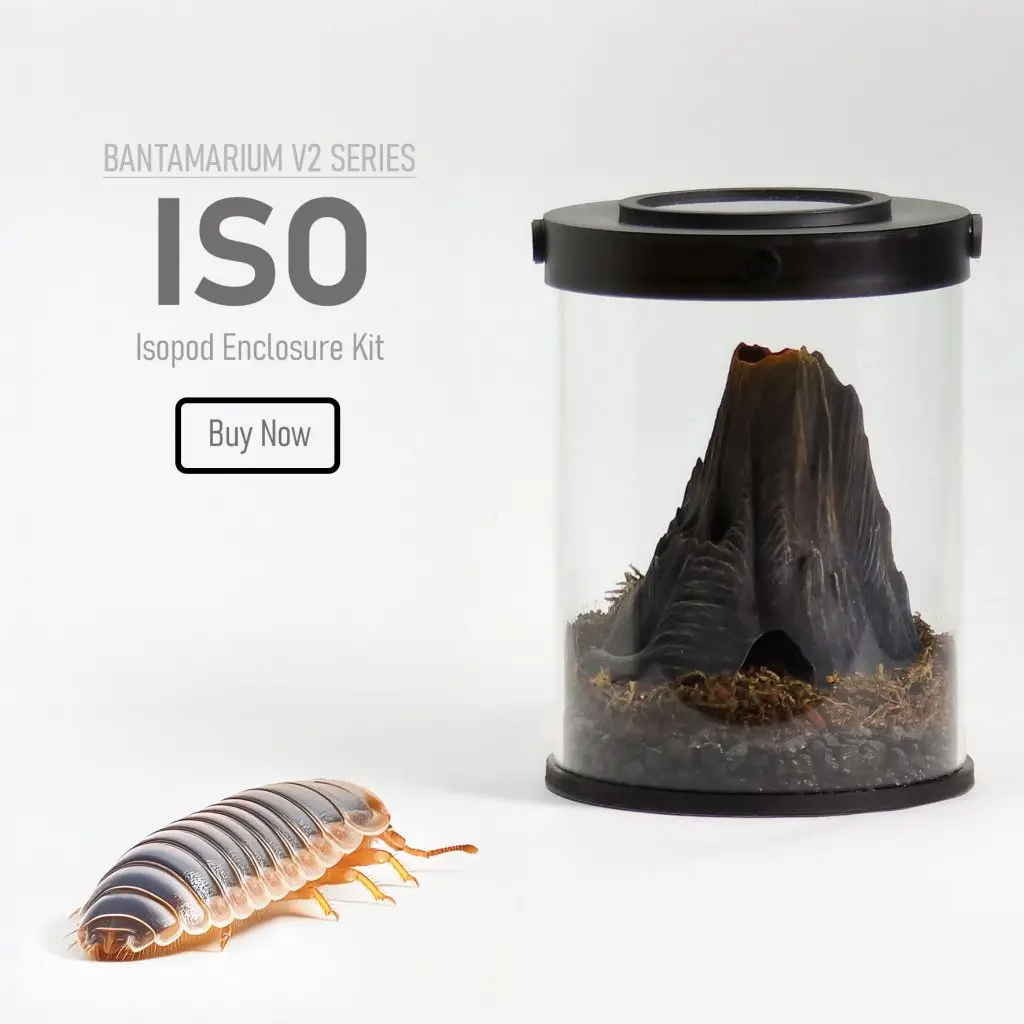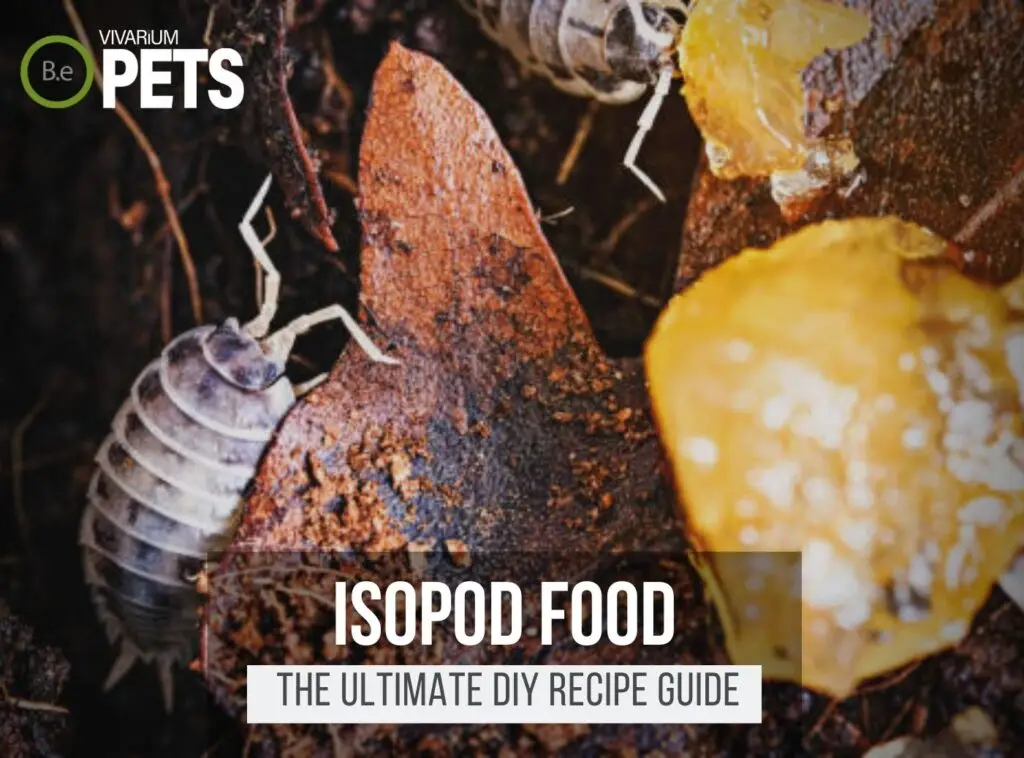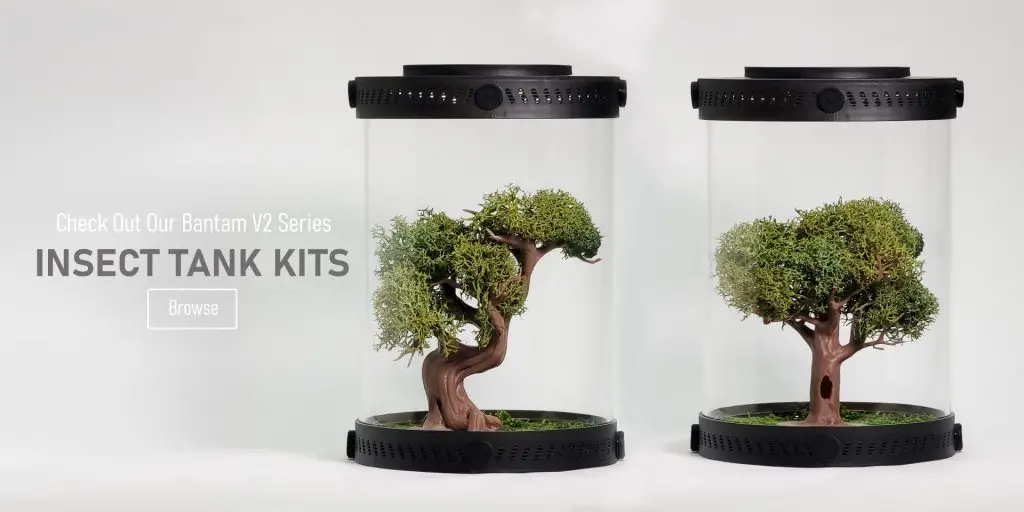Are you looking for an interesting and unique pet to add to your collection? Look no further than the Panda King Isopod (Cubaris sp.).
Native to caves and taverns in Vietnam, this species offers unique care and health requirements that make it a great choice for beginners, experts, and everyone in between.
Learn all about these fascinating cubaris isopods with this article. From their distinctive features and natural habitat to the proper care and health.
| Characteristics: | |
|---|---|
| Common Name | Panda King Isopod |
| Family Name | Armadillidae |
| Scientific Name | Cubaris sp. 'Panda King' |
| Use | Cleaning, Aerating Soil, Feeders |
| Temperament | Non-aggressive |
| Lifespan | 2-3 Years |
| Diet | Detritivore |
| Adult Size | 2 cm |
| Breeding Type | Egg Layer |
| Care Level | Easy |
| Minimum Tank Size | 2-7 Gallons |
| pH | 5.5-7.5 |
| Hardness | Moderate |
| Temperature | 72-80°F |
Table Of Contents:
ToggleWhat Is A Panda King Isopod?
Cubaris sp. ‘Panda King’ is a small terrestrial crustacean that is a member of the family Armadillidae.
This species has a very distinctive black-and-white coloration, resembling a panda, which gives it the common name Panda King Isopod.
The species is native to caves, taverns, and other damp tropical habitats in Vietnam and is typically found around decaying wood or vegetation.
They are relatively easy to care for and require minimal maintenance, making them great for beginning invertebrate enthusiasts.
Create an ideal habitat for your Panda King Isopods with our Customizable Isopod Terrarium Kits, which include everything you need to get started.
What Does Panda King Isopod Look Like?
Panda King Isopods (Cubaris sp.) are a unique species ranging in size from 1-2 centimeters long. Their body is a soft, purple-black color that can appear mottled.
They have very short antennae and two long cerci at the rear of their body, which they use to detect their surroundings.
This species also features pearlescent, silvery gray setae covering their body and tail-like appendages that they use to move around.
The most distinctive feature of the Panda King Isopods is their ventral-lateral patterns of white spots resembling the distinctive panda bear design.
Benefits Of Using Panda King Isopods
Panda King Isopods are a great addition to vivariums as they help to keep the environment clean and healthy.
They help reduce algae growth by grazing on submerged surfaces, as well as breaking down plant matter.
Being nocturnal, they can also help create a realistic and stable cycle of activity levels throughout the day.
In addition, the presence of isopods can be beneficial for other inhabitants of the terrarium, as it decreases the chances of diseases and parasites in the environment.


Panda King Isopod Facts
The Panda King Isopod (Cubaris sp.) is an arthropod native to caves and taverns in Vietnam, identifiable by its black-and-white pattern.
Its natural diet consists of decaying wood and leaf litter. It has a lifespan of 2-4 years and breeds by laying a single sack of eggs at a time.
Habitat
The Panda King Isopod is native to caves and taverns in Vietnam and is commonly found in the central and northeastern parts of the country.
The caves, which are abundant in this region, provide a perfect dark habitat for the isopods to live and breed in.
Besides the caves, they can also be found on tree branches, in leaf litter, and organic matter, such as rotting wood, fruits, and vegetables.
The Panda King Isopod is adapted for life in the dark and humid cave environment, making it a cold-blooded species.
The isopods typically reside in the shadows but can move easily through the darkness and quickly hide away in small crevices and cracks.
Replicate their natural habitat perfectly with our Bioactive Isopod Substrate Blend, designed to provide the ideal moisture and organic content for your isopods.
Diet
In their natural habitat, Panda King Isopods are scavengers, mainly feeding on decaying wood and leaf litter.
They can also feed on fruits and vegetables that may be available in their environment.
In their natural habitat, they may also feed on insects, slugs, and other invertebrates.
It’s important to note that they may even consume the remains of their kind or other dead animals or animals without vital signs.
Temperament
Panda King Isopods are a great choice if you are looking for an interesting pet to keep but do not want an overly active one.
These Isopods have a peaceful temperament when it comes to humans and other animals. They do best when kept in a solitary tank or cage, away from other larger tropical pets.
Typically, they do not like to be disturbed and will become timid if crowded too much.
In terms of handling, as long as you move slowly and avoid scaring them, the Panda King Isopods will be calm during periodic handling.
Lifespan
The lifespan of a Panda King Isopod is between 2 and 3 years, depending on its care and environment. They go through multiple stages in their life, from egg to adult.
The first stage is the egg stage where the female isopod will lay a single sack of up to 20 eggs. The eggs will hatch into nymphs after 6 weeks of incubation and the isopod nymphs will undergo several molts which each take several weeks.
During the adult stage, they will mate and the process is typically completed in 4-6 weeks. When the breeding is complete, the female will lay her eggs and the cycle begins again.
With proper care and a good environment, Panda King Isopods can live up to 3 years in captivity.
Breeding
The mating process of the Panda King Isopod is fascinating. Males court females by fanning their antennae and moving their bodies in zigzag patterns.
If a female is interested, she will back up and allow the male to mount her. During the mating process, females lay a single stalk of up to 20 eggs.
They carefully attach to the underside of a rock or another firm surface. The incubation period of the eggs is around 6 weeks and they typically hatch in the late rainy season.
Once hatched, the baby isopods remain close to their mother, forming small groups or colonies in which they hunt for food, mate, and explore together.
Where To Find Panda King Isopods
The Panda King Isopods are found in the caves of Vietnam and can also be found in taverns. Since they travel in the cold and dark, they can be easily spotted.
For those looking to catch one, the best time to do so is during the daytime and when the temperature is rather low; this is when they tend to be most active and visible.
It is important to remember to be gentle when catching wild isopods as they can be easily injured. A good way to catch them is by using a narrow container, such as a jar.
If you’re looking for an easier way to catch them, consider buying specimens online. Online stores offer isopods that are already raised and cultured in captivity.
They can be purchased and added to your terrarium with ease. In addition, buying from an online store will guarantee the quality of the specimens, since the health of wild-caught isopods can be difficult to guarantee.
Panda King Isopods Care
To properly care for a Panda King Isopod, it is important to provide them with an enclosure with the proper temperature and humidity.
Provide a substrate composed of wood and leaf litter and a diet of fruits and vegetables. Additionally, regular cleaning and quarantine practices should be implemented to ensure their health and safety.
Tank Requirements
When it comes to tank setup and requirements, Panda King Isopods thrive in vivariums with a minimum of 5 gallons or more.
It is best to maintain a slightly acidic to slightly alkaline pH of 6.5-8. Water hardness of 5-15 dH is suitable for this species.
They also prefer warm temperatures and should be kept between 75-80° Fahrenheit. Terrarium substrate, peat moss, coconut fiber, or other adhesives that are safe for invertebrates can be used.
Additionally, they need some kind of ventilation in their habitat, as well as low to moderate terrarium lighting.
What Do Panda King Isopods Eat?
Feeding a Panda King Isopod can be fairly straightforward as long as you provide it with a variety of food options. Here is a list of things you can feed your Panda King Isopod:
- Decaying wood and leaf litter
- Fruits and vegetables, such as apples, carrots, tomatoes, lettuce, and other leafy greens
- decaying feeder insects
- Fish flakes or pellets
- Mushrooms, seaweed, and algae
If you’re more of an avid hobbyist like myself, be sure to check out my ultimate DIY Isopod food guide. I give a more in-depth explanation of the best foods and my favorite recipe.
Best Tankmates For Panda King Isopods
When it comes to tankmates, it’s best to choose invertebrates that are peace-loving like the Panda King Isopod.
Crabs, Shrimp, and snails like Nerite and Malaysian Trumpet Snails are all excellent tankmates.
Other tankmates that can thrive in a similar environment include various species of worms, small centipedes, and springtails.
It’s important to remember that whatever tankmates you choose, they should all be from the same region as the Panda King Isopod.
They should also have the same requirements for humidity and substrate. With the right tankmates and the right care, the Panda King Isopod can thrive in its habitat.
Conclusion
The Panda King Isopod offers a unique and captivating pet experience to your home. With unique care requirements and the potential to thrive in lush environments with proper care and maintenance, this species is sure to keep both children and adults intrigued.
With proper vivarium management, this species can bring joy to many for years to come.
Create the ideal habitat for your isopods with our species-specific soil mixes and Insect Enclosure Kits. These products provide everything you need for a successful and thriving isopod colony.
Frequently Asked Questions
Panda King isopods range in size from 0.6–1.6 cm (0.24–0.63 inches).
Panda king isopods eat a variety of nutritional sources including fresh fruits, vegetables, carnivorous diets such as freeze–dried bloodworms, and dry foods like dried shrimp, fish flakes, and processed foods like cat and dog food.
When caring for panda isopods, ensure that the humidity level is between 70–80%, provide food such as fruit, vegetables, or seafood flakes, provide hideouts for the isopods, and check for signs of disease, parasites, and mold.
The Panda King isopod originates from humid caves in Vietnam.






